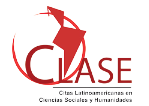Folksonomies: structure and applications
DOI:
https://doi.org/10.5433/1981-8920.2022v27n1p429Keywords:
Folksonomy, Knowledge organization systems, Information representationAbstract
Objective: The aim of this research is to systematize folksonomies fundamental aspects, based on the literature.
Methodology: It is a bibliographical research with quanti-qualitative data analysis. We analyzed 56 papers, from pair reviewed journals, published between 2009-2019, in Portuguese and English.
Results: The largest number of publications occurred in the year 2018, and authors affiliated to Chinese institutions are more recurrent. Four main folksonomies approaches were mapped: focus on users, focus on information retrieval, focus on the information recommender systems, and focus on models for folksonomies' development and evaluation. The folksonomy structure is basically formed by terms and expressions provided by users to tag information resources, but it vary on the level of vocabulary control and definitions on what public is authorized to register tags.
Conclusions: We conclude that folksonomies can be qualitatively improved using a semantic structure as basis, as for example tags categorization, in a way to maintain consistency and interoperability between different applications.
Downloads
References
ASSIS, J.; MOURA, M. A. Folksonomia: a linguagem das tags. Encontros Bibli, v. 18, n. 36, p.85-106, jan./abr., 2013. Disponível em: https://periodicos.ufsc.br/index.php/eb/article/view/1518-2924.2013v18n36p85. Acesso: em 22 jul. 2021.
BRASCHER, M; CAFÉ, L. Organização da informação ou organização do conhecimento? In: LARA, M. L. G.; SMIT, J. Temas de pesquisa em Ciência da Informação no Brasil. São Paulo: Escola de Comunicação e Artes/USP,2010.
CAFÉ, L. Terminologia: aplicação do (re)modelo de Simon Dick. In: FAULSTICH, E; ABREU, S. P. Linguística aplicada à terminologia e à lexicologia: cooperação internacional: Brasil e Canadá. Porto Alegre: UFRGS, Intitututo de Letras,NEC, 2003. p. 59-82.
CAMPOS, M. L. A. Linguagem documentária: teorias que fundamentamsuaelaboração. Rio de Janeiro: Eduff, 2001.
CAMPOS, M. L. A.; GOMES, H. E. Taxonomia e Classificação: o princípio decategorização. DataGramaZero, v.9, n.4, ago/2008. Disponivel em: https://brapci.inf.br/index.php/res/v/6615. Acesso em: 17 jul. 2021.
COMAROMI, J. P. The eighteen editions of the Dewey Decimal Classification. Albany, NY: Forest Press Division, Lake Placid Education Foundation, 1976.
DODEBEI, V. L. D. Tesauro: linguagem de representação da memória documentária. Niterói: Intertexto; Rio de Janeiro: Interciência, 2002. p. 119.
EATON, T. The development of classification in America in the role of classification inthe modern American library. Champaign: University ofIllinois, 1959.
FOSKETT, A.C. A abordagem temática da informação. Tradução: Antônio Agenor Briquet de Lemos. São Paulo: Polígono; Brasília: Ed.UnB, 1973.
FUJITA, M.S.L. A indexação de livros: a percepção de catalogadores eusuários de bibliotecas universitárias. Um estudo de observação do contexto sociocognitivo com protocolos verbais. São Paulo: Editora UNESP; São Paulo: Cultura Acadêmica, 2009. p. 149.
GRACIOSO, L. S.; SALDANHA, G. S. Ciência da informação e filosofia da linguagem: da pragmática à web pragmática. Araraquara: Junqueira & Marin, 2011.
HODJE, G. Systems of Knowledge Organization for Digital Libraries: beyond traditional authority files. Washington: Council on Library and Information Resources. 2000.
KIM, Heung-Nam. Folksonomy-based personalized search and ranking in social media services. Information Systems, v. 37, p. 61-76, 2012. Disponível em: https://www.sciencedirect.com/science/article/abs/pii/S0306437911000858. Acesso em: 22 jul. 2021.
LA MONTAGNE, L. E. American library classification: with special reference to the Library of Congress. Handen: The Shoe String Press, 1961.
LEIDECKER, K. F. Yankee teacher: the life of William Torrey Harris. New York: The Philosophical Library, 1946.
LUO, X.; OUYANG, Y.; XIONG, Z. Improving neighborhood based Collaborative Filtering via integrated folksonomy information. Pattern Recognition Letters, v. 33, p. 263-270, 2012. Disponível em: https://www.sciencedirect.com/science/article/abs/pii/S016786551100362X. Acesso em 22 julho 2021.
BRANDT, M.; MEDEIROS, M. B. B. Folksonomia: esquema de representação do conhecimento? TransInformação, Campinas, v. 22, n. 2, p. 111-121, maio/ago., 2010. Disponível em https://www.scielo.br/j/tinf/a/F8mxgMCbfMYTjYvCXpPQtgd/abstract/?lang=pt. Acesso em: 22 jul. 2021.
MIKA, P. Ontologies are us: A unified model of social networks and semantics. Journal of Web Semantics, v. 5, n. 1, p. 5-15, 2007. Disponível em https://link.springer.com/chapter/10.1007/11574620_38. Acesso em 22 jul. 2021.
MOURA, M. A. Emerging Discursive Formations, Folksonomy and Social Semantic Information Spaces (SSIS): The Contributions of the Theory of Integrative Levels in the Studies carried out by the Classification Research Group (CRG). Knowledge Organization, v. 41, n. 4, p. 304-310, 2014. Disponível em: doi.org/10.5771/0943-7444-2014-4-304. Acesso em: 22 jul. 2021.
NAIR, V.; DUA, S. Folksonomy-based ad hoc community detection in online social networks. Social Network Analysis and Mining, v. 2, n. 4, p. 305 - 328, 2012. Disponível em https://link.springer.com/article/10.1007/s13278-012-0081-9. Acesso em 22 jul. 2021.
OLSON, H. A. A potência do não percebido: Hegel, Dewey e seu lugar na corrente principal do pensamento classificatório. Tradução: Márcia ReginaSilva. Revista de Ciência da Informação e Documentação, v. 2, n. 1, p. 3-15, 2011. Disponível em: https://www.revistas.usp.br/incid/article/view/42331. Acesso em: 22 jul. 2021.
OLSON, H. Sameness and difference: A cultural foundation of classification. Library Resources & Technical Services, v. 45, n. 3, 2001. Disponível em: https://journals.ala.org/index.php/lrts/article/view/4913. Acesso em 22 jul. 2021.
SALES, R. Tesauros e ontologias sob a luz da Teoria Comunicativa da Terminologia, 2008. Dissertação (Mestrado em Ciência da Informação). Universidade Federal de Santa Catarina, Florianópolis, 2008.
SALES, R.; MARTÍNEZ-ÁVILA, D.; GUIMARÃES., J. A. C. The Contribution of James Duff Brown to the Analytic-Synthetic Method: Comparisons with Otlet, Kaiser, and Ranganathan. NASKO, v. 7, p. 1-6, 2019.
SALES, R; CAFÉ, L. Diferenças entre tesauros e ontologias. Perspectivas em Ciência da Informação, v. 14, n. 1, p. 99-116, 2009. Disponível em: http://portaldeperiodicos.eci.ufmg.br/index.php/pci/article/view/646Acesso em: 10 jul. 2021.
SANTOS, T. H. N. A taxonomia e a folksonomia na representação da informação de fotografias. Perspectivas em Ciência da Informação, v. 23, n.1, p. 89-103. Disponível em: http://portaldeperiodicos.eci.ufmg.br/index.php/pci/article/view/2395.Acesso em 22 jul. 2021.
VICKERY, B. C. Classificação e indexação nas ciências. Tradução: M.C. G. Pirolla. Rio de Janeiro: BNG/Brasilart, 1980. (Coleção biblioteconomia, documentação, ciência da informação).
WIEGAND, W. A. Irrepressible reformer: a biography of Melvil Dewey. Chicago: American Library Association, 1996.
WIEGAND, W. A. The Amherst Method: the origins of the Dewey Decimal Classification scheme. Libraries & Culture, v. 33, p. 175-194, 1998. Disponível em: https://www.jstor.org/stable/25548614. Acesso em: 22 jul. 2021.
XIE, H. Community-aware user profile enrichment in folksonomy. Neural Networks, v. 58, p. 111-121, 2014. Disponível em https://www.sciencedirect.com/science/article/abs/pii/S0893608014001087. Acessado em 22 jul. 2021.
YU, H.; ZHOU, B.; DENG, M.; HU, F. Tag recommendation method in folksonomy based on user tagging status. Journal of Intelligent Information Systems, v. 50, n. 3, p. 479–500, 2018. Disponível em: https://dl.acm.org/doi/10.1007/s10844-017-0468-1. Acessado em 22 julho 2021.
ZHOU, Dong et. al. Query Expansion with Enriched User Profiles for Personalized Search Utilizing Folksonomy Data. Transactions on Knowledge and Data Engineering, v. 29, n. 7, 2017. Disponível em < https://ieeexplore.ieee.org/document/7852459. Acessado em 22 jul 2021.
ABEL, F. Leveraging search and content exploration by exploiting context in folksonomy systems. New Review of Hypermedia and Multimedia, v.16, n.12, p. 33-70, 2010. Disponível em: https://www.tandfonline.com/doi/abs/10.1080/13614568.2010.497193.
ALRUQIMI, M.; AKNIN, N. Bridging the Gap between the Social and Semantic Web: Extracting domain-specific ontology from folksonomy. Journal of King Saud University Computer and Information Sciences, v. 31, n. 1, p. 15-21, 2017. Disponível em: https://www.sciencedirect.com/science/article/pii/S131915781730229X
AMARAL, A.; SALVADOR, T. Folksonomia em sites de redes sociais segmentadas em livros: um estudo exploratório da interface do Goodreads. Revista Digital de Biblioteconomia e Ciência da Informação, v. 16, n. 2, p. 397-413, 2018. Disponível em: https://periodicos.sbu.unicamp.br/ojs/index.php/rdbci/article/view/8650424.
ANAND, D.; MAMPILLI, B. S. Folksonomy-based fuzzy user profiling for improved recommendations. Expert Systems with Applications, v. 41, n. 5, p. 2424-2436, 2014. Disponível em: https://www.sciencedirect.com/science/article/abs/pii/S0957417413007951.
ASABERE, N. Y. Scholarly paper recommendation based on social awareness and folksonomy. International Journal of Parallel, Emergent and Distributed Systems, v. 30, n. 3, p. 211-232, 2015. Disponível em: https://www.tandfonline.com/doi/abs/10.1080/17445760.2014.904859?journalCode=gpaa20.
ASSIS, J.; MOURA, M. A. Folksonomia: a linguagem das tags. Encontros Bibli, v. 18, n. 36, p.85-106, jan./abr., 2013. Disponível em: https://periodicos.ufsc.br/index.php/eb/article/view/1518-2924.2013v18n36p85.
BATES, J.; ROWLEY, J. Social reproduction and exclusion in subject indexing: A comparison of public library OPACs and LibraryThing folksonomy. Journal of Documentation, v. 67, n.3, p. 431-448, 2011. Disponível em https://www.emerald.com/insight/content/doi/10.1108/00220411111124532/full/html
BRANDT, M.; MEDEIROS, M. B. B. Folksonomia: esquema de representação do conhecimento? Transinformação, v. 22, n. 2, p. 111-121, 2010. Disponível em https://www.scielo.br/j/tinf/a/F8mxgMCbfMYTjYvCXpPQtgd/abstract/?lang=pt.
CANTADOR. I. Categorising social tags to improve folksonomy-based recommendations. Web Semantics: Science, Services and Agents on the World Wide Web, v. 9, n. 1, p. 1-15, 2011. Disponível em: https://www.sciencedirect.com/science/article/abs/pii/S1570826810000685.
CORRÊA, R. F.; SANTOS, R. F. Análise das definições de folksonomia: em busca de uma síntese. Perspectivas em Ciência da Informação, v. 23, n. 2, p. 1-32, 2018. Disponível em http://portaldeperiodicos.eci.ufmg.br/index.php/pci/article/view/2571
DAL MAS, M. Elastic adaptive dynamics methodology on ontology matching on evolving folksonomy driven environment. Evolving Systems, v. 5, n. 1, p. 33-48, 2014. Disponível em https://link.springer.com/article/10.1007/s12530-013-9086-5
DE MEO, P. A query expansion and user profile enrichment approach to improve the performance of recommender systems operating on a folksonomy. User Modeling and User-Adapted Interaction, v. 20, p. 41-86, 2010. Disponível em https://link.springer.com/article/10.1007/s11257-010-9072-6.
DJUANA, E. Gold-standard evaluation of a folksonomy-based ontology learning model. Journal of Physics: Conference Series, 2018. Disponível em: https://iopscience.iop.org/article/10.1088/1742-6596/971/1/012045/meta
DU, Q. Folksonomy-based personalized search by hybrid user profiles in multiple levels. Neurocomputing, v. 204, p. 142-152, 2016. Disponível em: https://www.sciencedirect.com/science/article/abs/pii/S0925231216301163
EDA, T. The Effectiveness of Latent Semantic Analysis for Building Up a Bottom-up Taxonomy from Folksonomy Tags. World Wide Web, n. 12, p. 421-440, 2009. Disponível em https://link.springer.com/article/10.1007/s11280-009-0069-1
FANG, Q. Folksonomy-based visual ontology construction and its applications. IEEE Transactions on Multimedia, v. 18, n. 4, p. 702-713, 2016. Disponível em https://ieeexplore.ieee.org/document/7403978
FONT CORBERA, F.; SERRÀ JULIÀ, J.; SERRA, X. Analysis of the impact of a tag recommendation system in a real-world folksonomy. ACM Transactions on Intelligent Systems and Technology, v. 1, n. 6, p. 1-27, 2015. Disponível em https://dl.acm.org/doi/10.1145/2743026
FONT, F.; SERRÀ, J.; SERRA, X. Folksonomy-Based Tag Recommendation for Collaborative Tagging Systems. International Journal on Semantic Web and Information Systems, v. 9, n. 2, p. 01-30, 2013. Disponível em http://digital.csic.es/bitstream/10261/133422/1/IJSWIS_9(2)1-30.pdf.
FRANCISCO, A. P.; BAEZA-YATES, R.; OLIVEIRA, A. R. Mining query log graphs towards a query folksonomy. Concurrency and computation: practice and experience, v. 24, p. 2179–2192, 2012. Disponível em: https://onlinelibrary.wiley.com/doi/10.1002/cpe.1773.
GASEVIC, D. An Approach to Folksonomy-Based Ontology Maintenance for Learning Environments. IEEE Transactions on Learning Technologies, v. 4, n. 4, p. 301-314, 2011. Disponível em: https://ieeexplore.ieee.org/document/5744075.
GODOY, D.; CORBELLINI, A. Folksonomy-Based Recommender Systems: A State-of-the-Art Review. International Journal Of Intelligent Systems, v. 31, p. 314–346, 2016. Disponível em: https://onlinelibrary.wiley.com/doi/abs/10.1002/int.21753.
GOEL, S.; KUMAR, R. Folksonomy-based user profile enrichment using clustering and community recommended tags in multiple levels. Neurocomputing, v. 315, p. 425–438, 2018. Disponível em: https://www.sciencedirect.com/science/article/abs/pii/S0925231218308701.
GONZÁLEZ, J.A. M.; MEJÍAS, C. B. Folksonomy Indexing From the Assignment of Free Tags to Setup Subject: A Search Analysis into the Domain of Legal History. Knowledge Organization, v. 45, n. 7, p. 574-586, 2018. Disponível em: https://www.proquest.com/openview/8eaf2ba3919c297d9f3604ac7c459a25/1?pq-origsite=gscholar&cbl=2035306.
GOU, Z. Personalized Search by a Multi-type and Multi-level User Profile in Folksonomy. Arabian Journal for Science and Engineering, v. 43, p. 7563–7572, 2018. Disponível em: https://link.springer.com/article/10.1007/s13369-018-3133-2.
GUO, X.; HU, C.; ZHANG, R.; HUAI, J. A probabilistic framework of preference discovery from folksonomy corpus. Frontiers of Computer Science, v. 11, n. 6, p. 1075–1084, 2017. Disponível em: https://link.springer.com/article/10.1007/s11704-016-5132-3.
HAMANO, S.; OGAWA, T.; HASEYAMA, M. A Language-Independent Ontology Construction Method Using Tagged Images in Folksonomy. IEEE Access, v. 6, p. 2930-2942, 2018. Disponível em: https://ieeexplore.ieee.org/abstract/document/8234557.
HEU, J.; QASIM, I.; LEE, D. FoDoSu: multi-document summarization exploiting semantic analysis based on social Folksonomy. Information Processing & Management, v. 51, n. 1, p. 212-225, 2015. Disponível em: https://www.sciencedirect.com/science/article/abs/pii/S0306457314000508.
JABEEN, F.; KHUSRO, S. Quality-protected folksonomy maintenance approaches: a brief survey. The Knowledge Engineering Review, v. 30, n. 5, p. 521–544, 2015. Disponível em: https://dblp.org/pid/90/9808.html
JIN, Y. Topic-based ranking in Folksonomy via probabilistic model. Artificial Intelligence Review, v. 36, p. 139–151, 2011. Disponível em https://link.springer.com/article/10.1007/s10462-011-9207-0.
KIM, H. Folksonomy-based personalized search and ranking in social media services. Information Systems, v. 37, p. 61-76, 2012. Disponível em: https://www.sciencedirect.com/science/article/abs/pii/S0306437911000858.
KIM, H. Toward Video Semantic Search Based on a Structured Folksonomy. Journal of the American Society of Information and Technology, v. 62, n. 3, p. 478-492, 2011. Disponível em: https://onlinelibrary.wiley.com/doi/abs/10.1002/asi.21482.
KIU, C. C. Automatic Tags Generation in Folksonomy for Learning Resources Reuse and Sharing. Pertanika Journal of Science & Technology, v. 24, n. 2, p. 493-506, 2016. Disponível em http://www.pertanika.upm.edu.my/pjst/browse/regular-issue?article=JST-S0032-2016.
LAU, S. B. Y. LEE, C. S.; SINGH, Y. P. A folksonomy-based lightweight resource annotation metadata schema for personalized hypermedia learning resource delivery. Interactive Learning Environments, v. 23, n. 1, p. 79–105, 2015. Disponível em: https://www.tandfonline.com/doi/abs/10.1080/10494820.2012.745429.
LEE, S.; NEVE, W.; PLATANIOTIS, K.; RO, Y. M. MAP-based image tag recommendation using a visual folksonomy. Pattern Recognition Letters, v. 31, p. 976-982, 2010. Disponível em: https://www.sciencedirect.com/science/article/abs/pii/S0167865509003663.
LEE, S.; NEVE, W.; RO, Y. M.Tag refinement in an image folksonomy using visual similarity and tag co-occurrence statistics. Signal Processing: Image Communication, v. 25, p. 761-773, 2010. Disponível em: https://www.sciencedirect.com/science/article/abs/pii/S0923596510001098.
LUO, X.; OUYANG, Y.; XIONG, Z. Improving latent factor model based collaborative filtering via integrated folksonomy factor. International Journal of Uncertainty Fuzziness and Knowledge Based Systems, v. 19, n. 2, p. 307-327, 2011. Disponivel em: https://www.worldscientific.com/doi/10.1142/S0218488511007015.
LUO, X.; OUYANG, Y.; XIONG, Z. Improving neighborhood based Collaborative Filtering via integrated folksonomy information. Pattern Recognition Letters, v. 33, p. 263-270, 2012. Disponível em: https://www.sciencedirect.com/science/article/abs/pii/S016786551100362X.
MOCNIK, F. B.; ZIPF, A.; RAIFER, M. The OpenStreetMap folksonomy and its evolution. Geo-Spatial Information Science, v. 20, n. 3, p. 219-230, 2017. Disponível em: https://www.tandfonline.com/doi/full/10.1080/10095020.2017.1368193.
MOURA, M. A. Emerging Discursive Formations, Folksonomy and Social Semantic Information Spaces (SSIS): The Contributions of the Theory of Integrative Levels in the Studies carried out by the Classification Research Group (CRG). Knowledge Organization, v. 41, n. 4, p. 304-310, 2014. Disponível em: doi.org/10.5771/0943-7444-2014-4-304.
MOVAHEDIAN, H.; KHAYYAMBASHI, M. R. Folksonomy-based user interest and disinterest profiling for improved recommendations: An ontological approach. Journal of Information Science, v. 40, n. 5, p. 594-610, 2014. Disponível em: https://journals.sagepub.com/doi/10.1177/0165551514539870.
NAIR, V.; DUA, S. Folksonomy-based ad hoc community detection in online social networks. Social Network Analysis and Mining, v. 2, n. 4, p. 305 - 328, 2012. Disponível em: https://link.springer.com/article/10.1007/s13278-012-0081-9.
NOCERA, A.; URSINO, D. An approach to deriving a virtual thematic folksonomy based system from a social inter-folksonomy based scenario. Web Intelligence and Agent Systems: An International Journal, v. 10, p. 361–384, 2012. Disponível em: https://dl.acm.org/doi/abs/10.5555/2590069.2590070.
NOCERA, A.; URSINO, D. An approach to providing a user of a ‘‘social folksonomy’’ with recommendations of similar users and potentially interesting resources. Knowledge-Based Systems, v. 24, p. 1277-1296, 2011. Disponível em: https://www.sciencedirect.com/science/article/abs/pii/S0950705111001122.
SANTOS, T. H. N. A taxonomia e a folksonomia na representação da informação de fotografias. Perspectivas em Ciência da Informação, v. 23, n.1, p. 89-103. Disponível em: http://portaldeperiodicos.eci.ufmg.br/index.php/pci/article/view/2395
SINGH, A. K. Folksonomy Based Trend Analysis on Community Question Answering Sites: A Perspective on Software Technologie. IEEE Access, v. 4, p. 5223-5233, 2016. Diponível em: https://ieeexplore.ieee.org/document/7547300.
SINGH, A. K.; NAGWANI, N. K; PANDEY, S. A user ranking algorithm for efficient information management of community. Journal of Information Science, v. 45, n. 5, p. 1-15, 2018. Disponível em:
https://journals.sagepub.com/doi/abs/10.1177/0165551518808198.
WU, H. On improving aggregate recommendation diversity and novelty in folksonomy-based social systems. Personal and Ubiquitous Computing, v. 18, p.1855–1869, 2014. Disponível em: https://link.springer.com/article/10.1007/s00779-014-0785-0.
XIE, H. Community-aware user profile enrichment in folksonomy.
Neural Networks, v. 58, p. 111-121, 2014. Disponível em: https://www.sciencedirect.com/science/article/abs/pii/S0893608014001087.
XIE, H. Incorporating sentiment into tag-based user profiles and resource profiles for personalized search in folksonomy. Information Processing & Management, v. 52, n. 1, p. 61-72, 2016. Disponível em: https://www.sciencedirect.com/science/article/abs/pii/S0306457315000394.
XUE, H.; QIN, B.; LIU, T. Topical key concept extraction from folksonomy through graph-based ranking. Multimedia Tools and Applications, v. 75, 2016, pp. 8875–8893. Disponível em: https://link.springer.com/article/10.1007/s11042-014-2303-9.
YAMABA, H.; TANOUE, M.; TAKATSUKA, K.; OKAZAKI, N. Shigeyuki Tomita. Representation of human preference using folksonomy and the idea called concept. Artificial Life and Robotics, v. 19, p. 299-304, 2014. Disponível em: https://link.springer.com/article/10.1007/s10015-014-0170-0.
YU, H.; ZHOU, B.; DENG, M.; HU, F. Tag recommendation method in folksonomy based on user tagging status. Journal of Intelligent Information Systems, v. 50, n. 3, p. 479–500, 2018. Disponível em: https://dl.acm.org/doi/10.1007/s10844-017-0468-1.
ZHOU, D. Query Expansion with Enriched User Profiles for Personalized Search Utilizing Folksonomy Data. Transactions on Knowledge and Data Engineering, v. 29, n. 7, p. 1536 - 1548, 2017. Disponível em: https://ieeexplore.ieee.org/document/7852459.
Downloads
Published
How to Cite
Issue
Section
License
Copyright (c) 2022 Informação & Informação

This work is licensed under a Creative Commons Attribution 4.0 International License.
A revista se reserva o direito de efetuar, nos originais, alterações de ordem normativa, ortográfica e gramatical, com vistas a manter o padrão culto da língua e a credibilidade do veículo. Respeitará, no entanto, o estilo de escrever dos autores. Alterações, correções ou sugestões de ordem conceitual serão encaminhadas aos autores, quando necessário.
O conteúdo dos textos e a citação e uso de imagens submetidas são de inteira responsabilidade dos autores.
Em todas as citações posteriores, deverá ser consignada a fonte original de publicação, no caso a Informação & Informação.














